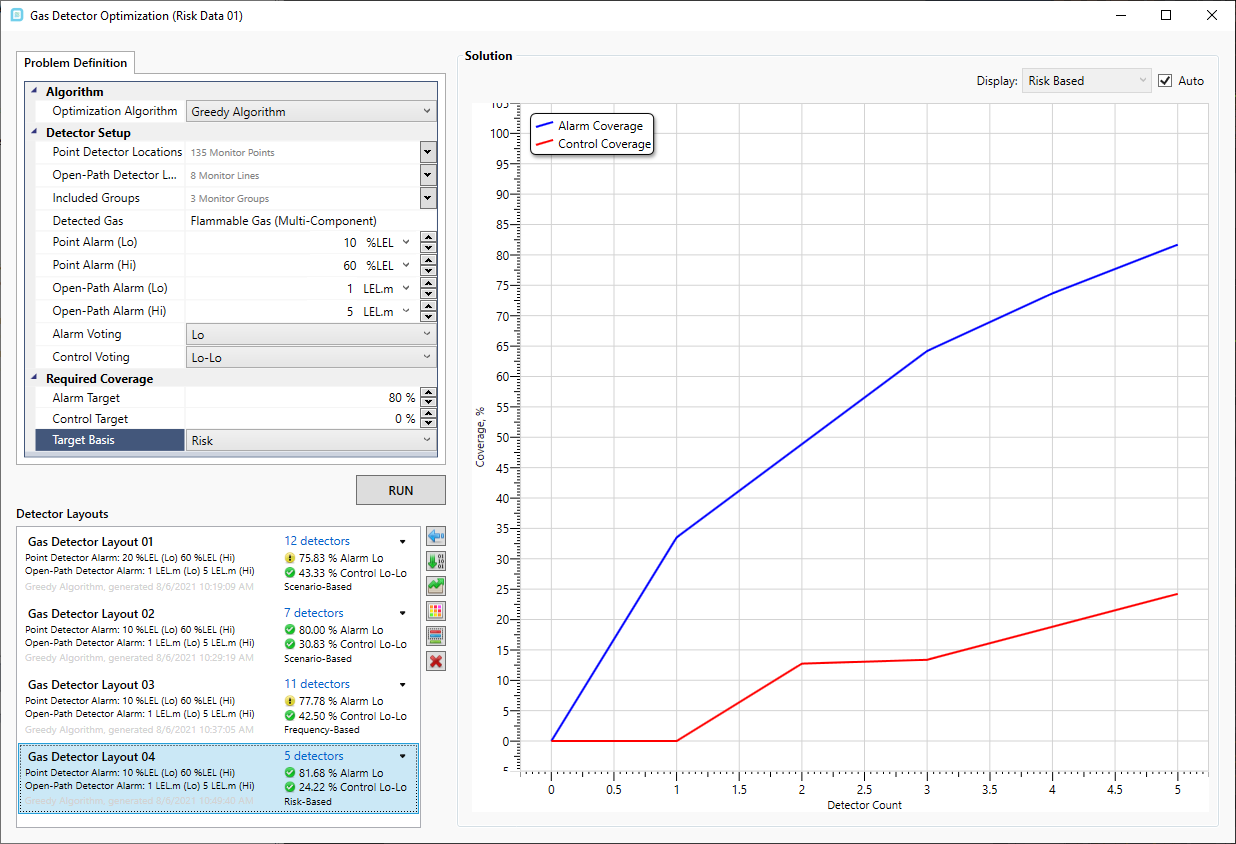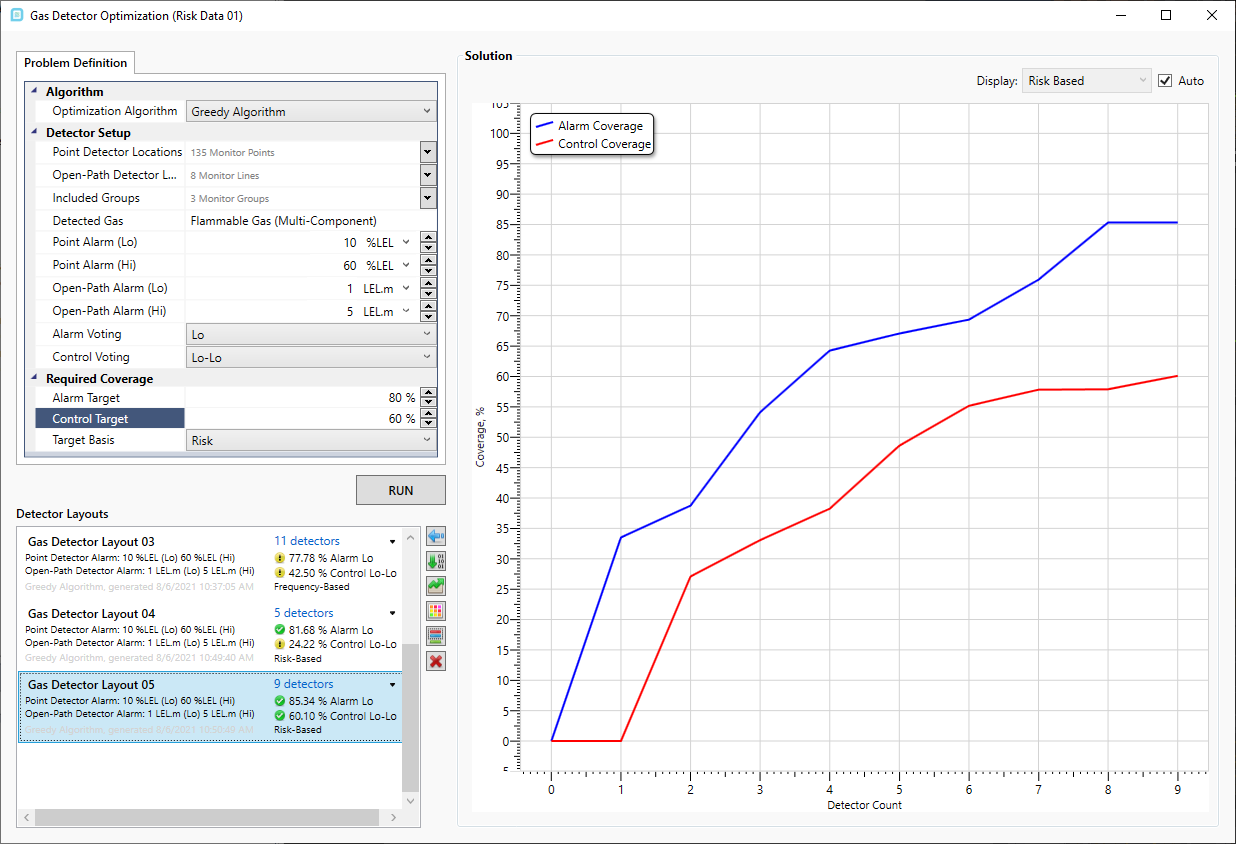Optimizing Based on Risk Data
Risk based optimization is a powerful tool for positioning gas detectors. The method accounts for not only the frequency of the release but also the size of the gas cloud (consequence) which was added in Tutorial 11. Using Risk as the Target Basis ensures that the gas leaks with the larger resulting gas clouds are set as a priority to detect and less priority on the smaller insignificant gas leaks.
To run and optimization based on the risk of the simulations completed:
-
Ensure the consequence values based on the flammable mass has been added via the Consequence Weighting Window. This can be checked by looking at the Risk Manager's Simulation Summary Tab - the list of consequence values should be different and not the default 1.000 value for each case.
-
In the optimization controller, leave all the parameters the same as in the last section and change the Target Basis to be Risk
-
Click the Run button
The resulting layout achieves 81.6% coverage using just 5 devices. This is the general trend of risk-based gas mapping - using a target basis of risk will generally result in requiring less detectors than that of scenario or frequency. However, it may not be the case for all projects.
The percent coverage value here can be interpreted as an 81.6% reduction in the total risk modeled in the project.

Tutorial 12 - Figure 18 - Resulting coverage for a target basis using risk
Each of the above cases for optimization has only entered a 1ooN target but layouts can be generated with both 1ooN and 2ooN targets. Performing optimization with 2ooN targets generally result in higher detector counts. The example below shows that adding a 60% 2ooN target to the above risk optimization results in 9 detectors.

Tutorial 12 - Figure 19 - Results for a risk-based optimization with a 1ooN and 2ooN target
The above results can also be compared with different consequence assignments. Both the Consequence Weighting Window and the Optimization Controller can be opened at the same time allowing you to enter various strategies for the consequence function and immediately seeing how it affects the gas detector layout when the new consequence assignment is applied.
Continue to the next section to explore the various export options for optimized layouts.